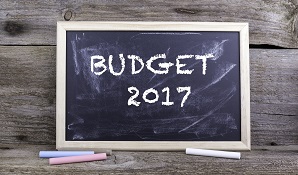Good financial planning can protect you and your family against an uncertain future. Here’s a step-by-step approach to help you develop a financial plan that will ensure your family will be supported, no matter what the future holds.
Step 1. Assess your current financial situationHow much money do you have? What assets have you built up? What debts do you have? What are your living expenses now and what additional expenses do you need to provide for (for instance, insurance or emergency savings)? Determining your current financial situation will help you to set realistic goals.
Step 2. Estate planningEveryone should have a will. Even the best financial plan can go awry if you haven’t spelled out in writing what happens after your death. Your will should stipulate what happens to your money and other assets, in other words, who inherits what. If you have children, a will is even more important. As well as giving instructions regarding who inherits what, in the will you specifiy who you appoint as guardian for your children should you and your spouse die at the same time.
Step 3. Review your long-term insuranceLife, disability and dread disease cover are an essential part of protecting your family against financial uncertainty.
According to the ASISA 2016 Life and Disability Insurance Gap Study, the majority of South Africa’s 14 million breadwinners are under-insured for death and disability. In the event of their death or disability, their families would not be able to maintain their current standard of living. The stats show that South African households could have to cut expenses by as much as 34% following the death of a breadwinner, and by as much as 30% following the permanent disability of a breadwinner.
Ideally, you will take out policies that cover your family against all of the major risks – disease, disability and death. In reality, the type and amount of cover you opt for depends on your expenses and financial obligations. Remember that the earlier you take out such policies, the more affordable they are.
Let’s look at the long-term insurance policies that you need to consider.
Life insurance pays out a lump sum in the event of your death. Depending on how much cover you have, this money might be used by your beneficiaries to replace lost income, pay off your debts and ensure that your kids get the education that you wanted for them.
Important facts to remember about life insurance:
- A life insurance pay-out means your family has cash in hand to provide for immediate expenses.
- A life insurance payout is protected from your creditors as long as you nominate a beneficiary. In this case, your life insurance pay-out will be paid out to that beneficiary. If you don’t nominate a beneficiary, however, then the lump sum pay-out will go into your estate and will be administered by the government in a process called probate. During the probate period, creditors can claim payment from the estate.
- The lump sum paid to your family is tax free.
Dread disease insurance protects in the event of a serious disease, such as cancer or heart attacks. The pay-out can be used to pay medical expenses not covered by your medical aid and to cover basic living expenses while you recuperate.
Disability insurance pays a lump sum in the event of the policyholder being permanently disabled, and unable to work. This money can be used to replace all or some of your income, or to pay off any debt. You can also use the funds to remodel your home or car to cater for your disability.
Income protection pays a monthly amount to policyholders who are temporarily disabled and unable to work due to illness or accident. This pay-out replaces your income so that you can continue to pay your monthly expenses while you recuperate.
Step 4: Review your short-term insuranceA short-term insurance policy protects your valuable assets against unexpected loss. Short-term insurance policies generally protect the following assets:
Car insurance covers your vehicles for accident, fire and theft. You might choose to be comprehensively covered, or covered for third-party loss only.
Homeowner’s insurance covers your house and all its fixtures and fittings.
Household contents covers everything in your home. Some valuable items may have to be separately listed because they may be on your person when you leave the house, for example, jewellery, cameras, cell phones and laptops.
Step 5: Look at your cash and savingsAn emergency savings fund is essential and will give you great peace of mind. When we say ‘emergency’, we’re talking about big unplanned expenses like a period of unemployment, unplanned travel, unexpected medical expenses, and home repairs that are not expected or budgetted for. Financial planners recommend that you aim to have an amount equivalent to at least three months’ salary saved in your emergency fund.
It’s hard to come up with extra cash every month to build an emergency fund. Most people decide to wait to save until they have more disposable income – but that day never seems to come. The best advice is to rather start small, but do start immediately. The easiest way to start saving towards an emergency fund is to create a debit order for it. You’re treating it as you would a bill – but it’s actually savings.
With each of these bases covered, you can be confident that whatever life throws at you, you have taken steps to minimise the hardship for yourself and your family. You will be happier and less anxious knowing that your family’s future is secured by a financial plan – no matter what happens.




